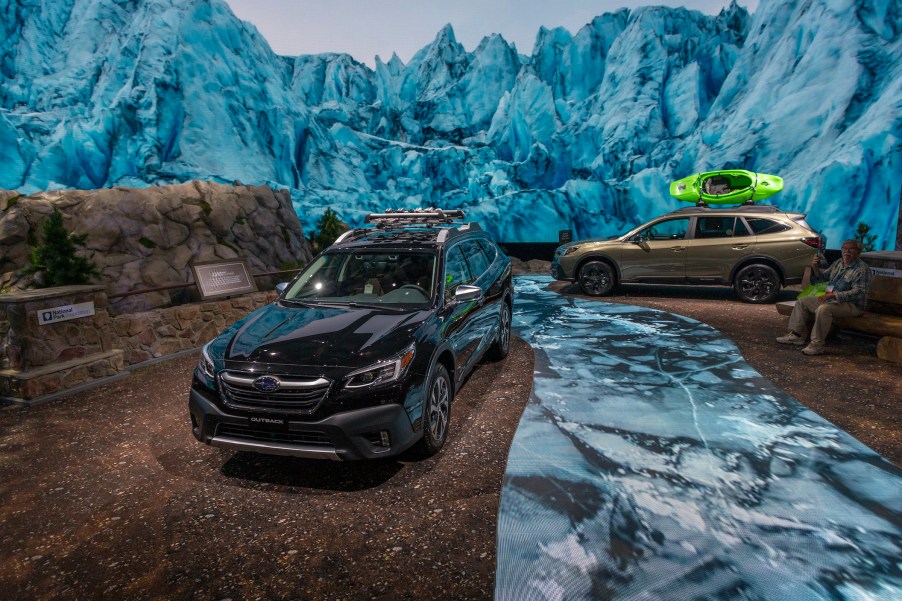
The Subaru Outback Gets a Lower Safety Rating Than the Legacy Because of Headlights
Subaru, in general, has been collecting safety awards left and right for years. As the numbers came out for the IIHS Top Safety Picks last year, the Subaru Legacy knocked it out of the park as always, but the Outback got a second-tier rating. What’s strange is that the Subaru Outback and the Legacy are basically the same car – or are they?
Subie showdown
OK, maybe saying “the same car” is a bridge too far. The Subaru Outback is a cross-overish station wagon while the Legacy is a norm-core sedan, but underneath the bodywork, they are pretty darn similar. They share a powertrain, wheelbase, and frame, so why did the IIHS give them different ratings? Furthermore, why was it due to the Outback’s headlights when they share the same headlights? So many questions. Thankfully, Will Sabel Courtney of Gear Patrol dug into the mystery.

OK, let’s lay out the standings between the two models. The 2020 Subaru Legacy nabbed the coveted Top Saftey Pick+, while the Outback only managed to walk away with the Top Saftey Pick. At first glance, one might assume there was a problem with the curve adaptive headlights that follow the driver’s steering, but both the Legacy and the Outback have this option. The IIHS said that even the base model Outback (without curved adaptive headlights) are guilty of the same fault, according to Gear Patrol.
The IIHS sounds off on the Subaru Outback
Courtney reached out via Twitter to solve the mystery and square up with the IIHS. Confused by the seemingly identical headlights for the two models in question, he inquired why the same headlights would receive different safety outcomes.
The IIHS responded, “The headlights on the Outback are mounted about 4 inches higher than they are on the Legacy, which makes it harder to achieve visibility and reduce glare. In this case, the headlights on the Outback produced more glare than those of the Legacy.”
When Courtney continued his line of questioning about the headlight height and “glare,” the IIHS further explained, “Glare is measured at 3 feet, 7 inches off the ground. Vehicles that exceed glare thresholds are assigned demerits. In the case of the Outback’s curve-adaptive lights, you can see its excessive glare by approach here.”
The IIHS is nothing if not thorough. To that point, when checking the IIHS’s page on the 2020 Subaru Outback, they go into excruciating detail on the effectiveness of the headlights in ever trim and in every road condition, including right and left turns. IT. IS. BORING. But, it does answer our question about why these two models received different ratings when on paper, they seem nearly identical.
Let’s (not) go to the charts
To save quite a boring dig through the IIHS’s charts and graphs, the basis of the lower rating comes down to the comfort and safety of other drivers. The IIHS’s charts and figures aren’t suggesting that the headlights don’t offer drivers what they need to see; it’s that the headlight height is four inches high enough to possibly create enough glare for other drivers to be a nuisance.
As the folks at Gear Patrol pointed out, with the prevalence of SUVs and trucks these days, wouldn’t the average driver be sitting high enough to counteract the 4-inch difference in headlight height from the Outback? Well, the IIHS didn’t think so.
So, don’t fret perspective 2020 Subaru Outback buyer or current owner, the Outback is just as safe as the Subaru Legacy, and the headlights work fine. But, maybe they are slightly more annoying for other drivers.



